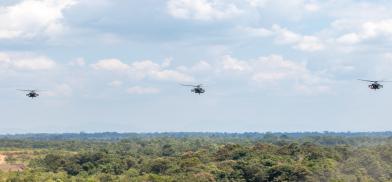Fourteen countries, including India, in multinational exercise in Indo-Pacific: US calls it 'integrated deterrence' against China and Russia
"The National Defense Strategy is really premised on this urgent need to sustain and strengthen deterrence with the focus on the People's Republic of China," the US official said.

The 16th annual Garuda Shield exercise started August 3 this year, expanding from a bilateral training event between the Indonesian and US militaries to 14 participant nations, making it one of the largest multinational exercises in the Indo-Pacific region.
Participating nations include Canada, UK, France, India, Malaysia, New Zealand, South Korea, Papua New Guinea and Timor Leste.
Garuda Shield is a great example of integrated deterrence where allies and partners work together to deter aggression from China and Russia, Mara E. Karlin, USA Assistant Secretary of Defense for strategy, plans and capabilities, said during a panel on "Landpower and Integrated Deterrence in the Indo-Pacific" at the annual meeting of the Association of the United States Army.
"Partners in regions across the world want to collaborate, want to work together. And we just see this in spades. It brings a comparative advantage as we deal with challenges," she said.
"The National Defense Strategy is really premised on this urgent need to sustain and strengthen deterrence with the focus on the People's Republic of China," the US official said.
Besides working with allies and partners, integrated deterrence also means integrating with interagency partners, she said.
"We are most successful as a US government when we're all focused on our comparative advantages; when our diplomats are focused on delivering in their world; when our treasury colleagues are focused on just sanctioning the heck out of our adversaries; when all of us are showing up across the interagency doing what we do best," she said.
A third type of integrated deterrence is having a credible combat force able to maneuver at speed and scale across theaters and across spectrums of conflict using capabilities in all domains — air, land, sea, space and cyber, she said.
The spectrums of conflict refer to gray zone, hybrid and conventional warfare, each at a different level of intensity and strategy.
Regarding integrated deterrence, Karlin said the force must be resilient and have a "good feedback loop," to understand what adversaries are thinking.
"How does the adversary perceive what's going on, and are we having the impact we think we are having? That's a hard conversation because there's often resources and attention put toward an issue. But we really have to be rigorous. We have to be comfortable looking and saying, 'We have tried to do X or Y. Did it work?' And then really being able to learn," she said.
(Courtesy US Department of Defense)








Post a Comment